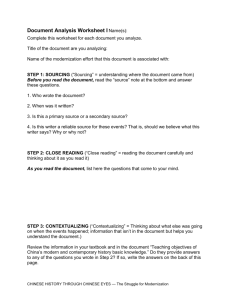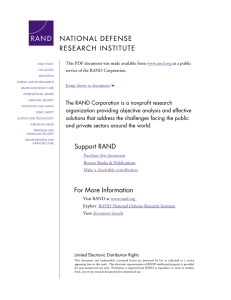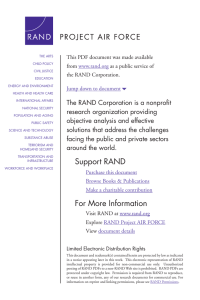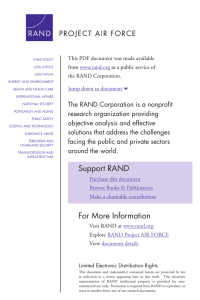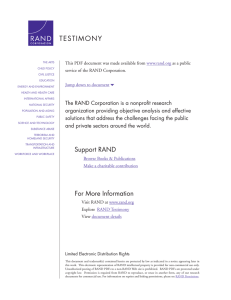PREFACE
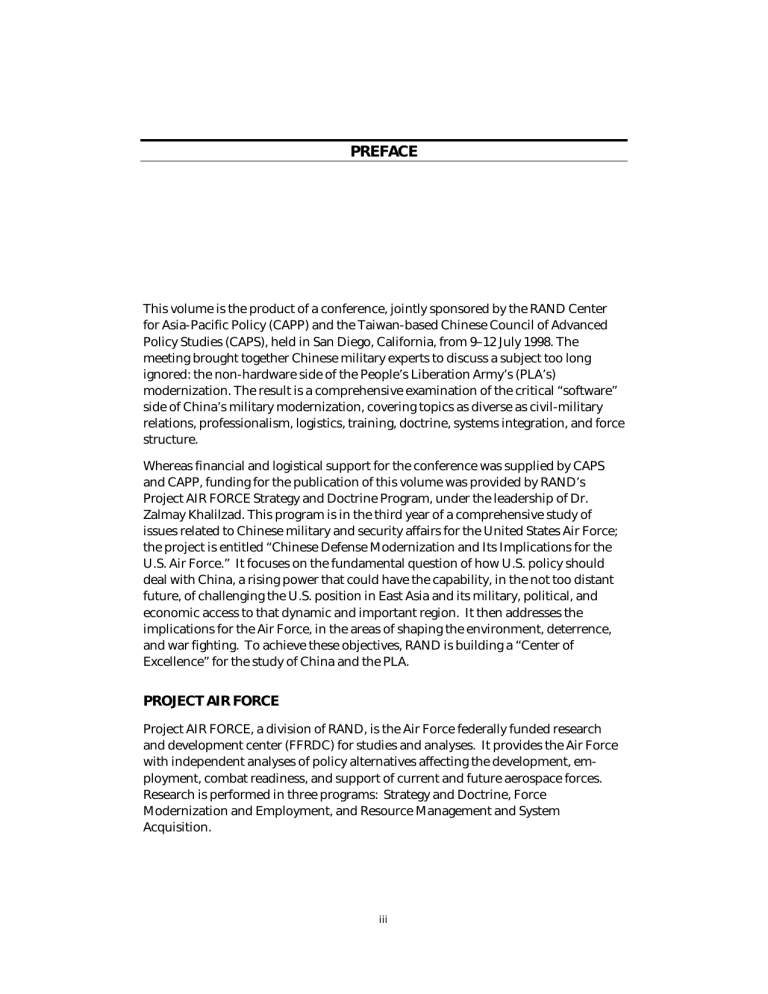
PREFACE
This volume is the product of a conference, jointly sponsored by the RAND Center for Asia-Pacific Policy (CAPP) and the Taiwan-based Chinese Council of Advanced
Policy Studies (CAPS), held in San Diego, California, from 9–12 July 1998. The meeting brought together Chinese military experts to discuss a subject too long ignored: the non-hardware side of the People’s Liberation Army’s (PLA’s) modernization. The result is a comprehensive examination of the critical “software” side of China’s military modernization, covering topics as diverse as civil-military relations, professionalism, logistics, training, doctrine, systems integration, and force structure.
Whereas financial and logistical support for the conference was supplied by CAPS and CAPP, funding for the publication of this volume was provided by RAND’s
Project AIR FORCE Strategy and Doctrine Program, under the leadership of Dr.
Zalmay Khalilzad. This program is in the third year of a comprehensive study of issues related to Chinese military and security affairs for the United States Air Force; the project is entitled “Chinese Defense Modernization and Its Implications for the
U.S. Air Force.” It focuses on the fundamental question of how U.S. policy should deal with China, a rising power that could have the capability, in the not too distant future, of challenging the U.S. position in East Asia and its military, political, and economic access to that dynamic and important region. It then addresses the implications for the Air Force, in the areas of shaping the environment, deterrence, and war fighting. To achieve these objectives, RAND is building a “Center of
Excellence” for the study of China and the PLA.
PROJECT AIR FORCE
Project AIR FORCE, a division of RAND, is the Air Force federally funded research and development center (FFRDC) for studies and analyses. It provides the Air Force with independent analyses of policy alternatives affecting the development, employment, combat readiness, and support of current and future aerospace forces.
Research is performed in three programs: Strategy and Doctrine, Force
Modernization and Employment, and Resource Management and System
Acquisition.
iii






